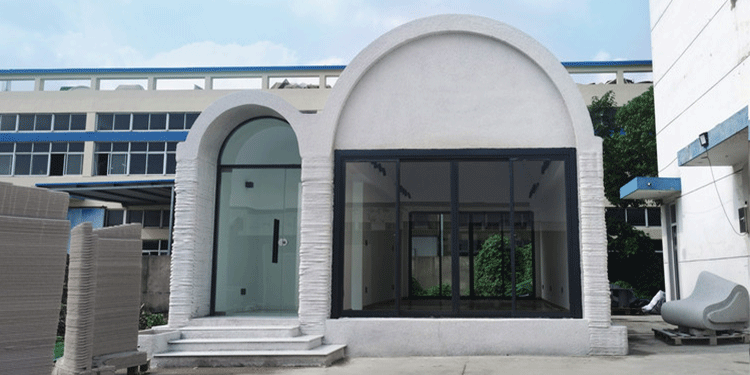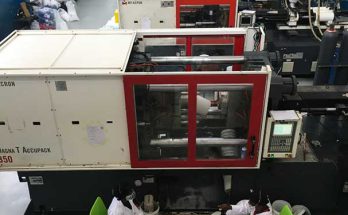 Professor Xu Weiguo’s team at Tsinghua University School of Architecture independently researched and built a “Mobile Platform of Robotic 3D Printing in Concrete” and a “Rapid Construction System for Concrete Houses.” Recently, the two technical advances were successfully implemented in the actual printing/construction of a model house for low-income housing in Africa, resulting in the completion of a genuine 3D printed concrete building at Wuxi Research Institute of Applied Technologies Tsinghua University’s Experimental Base.
Professor Xu Weiguo’s team at Tsinghua University School of Architecture independently researched and built a “Mobile Platform of Robotic 3D Printing in Concrete” and a “Rapid Construction System for Concrete Houses.” Recently, the two technical advances were successfully implemented in the actual printing/construction of a model house for low-income housing in Africa, resulting in the completion of a genuine 3D printed concrete building at Wuxi Research Institute of Applied Technologies Tsinghua University’s Experimental Base.
The “Rapid Construction System for Concrete Houses” is specifically designed for low-income African families. The house has a porch, a guest dining room, bedrooms, a kitchen, and a bathroom, among other things, and can accommodate up to four people. The porch, kitchen, and bathroom are located on one side of the house, forming a rectangular unit; the guest dining room and bedrooms are located on the other, separated by a light partition wall or storage furniture. The house’s layout is adaptable, allowing it to meet the needs of the people who live there. The roof is made up of two barrel arches, one of which is larger than the other, that cover the above-mentioned spaces while providing a spacious and comfortable indoor environment beneath them. On both the south and north sides of the building, a floor-to-ceiling window is installed, and a skylight is installed in the kitchen roof, providing adequate lighting for the indoor space. The typical local woven texture was used as decoration on the exterior walls, which was printed in tandem with the wall structure using robotic 3-D printing equipment. The thermal insulation material is poured into the wall’s gap, creating an integrated exterior wall system that combines decoration, structure, and insulation. Although reacting to local cultural traditions, the building has a simple and modern architectural picture.
A mobile robotic arm with a 3-D printing rig, a rail with a mobile lift frame, and a dragging-suspending platform, among other things, make up the “Mobile Platform of Robotic 3-D Printing in Concrete.” The robotic arm and the printing front-end are mounted and built to be movable on the lift platform in the 3-D printing system. On the other side, the printing material, appending machine, all-in-one stirring and pumping machine, and control equipment are all mounted on the dragging-suspending platform. The printing platform only needs two people to press buttons on the mobile platform to print/build an entire building. When incorporating and simplifying the technique of 3-D printing in concrete, it minimises human involvement in the printing/construction process. This printing platform allows for direct, on-site printing of all bases, walls, and roofs, allowing for quick and low-cost construction.



